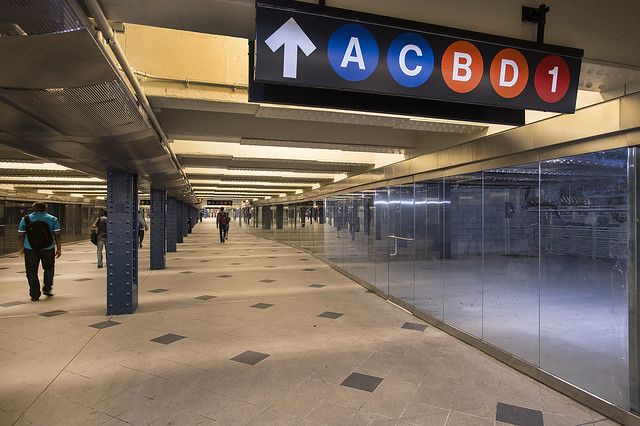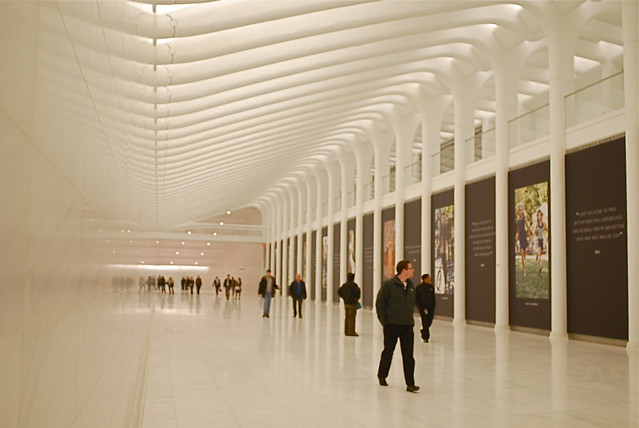In the month of August, 138.7 million New Yorkers rode the subway, with trains seeing 5.113 million riders per weekday and 5.717 million riders on Saturday and Sunday combined. That’s a lot of people. In fact, it’s a new 45-year record high for August for the MTA, and the initial figures for September are even higher.
For better or worse than, a lot of people are riding the subway. Tourists, residents, students, workers, business folk and retirees are all taking the train everywhere, and even as the fares went up in March, so too did ridership. Now, the MTA is planning to increase service across eight lines to better meet peak-hour demand, and ridership shows no signs of slowing down. It is, in other words, a far cry from the subway system of my youth.
New Yorkers ride the trains because they have to do, but complaints are always on the rise — which leads me to question just how much we’re enjoying the service. I marvel at the ability to get around relatively quickly, easily and cheaply, but sardine-like rush hour trains are no joy. The MTA too is interested in rider feedback, and today, they released the results of their rider survey. It ends up that we’re mostly satisfied, maybe.
I’ve always been skeptical of the MTA’s ridership survey. It’s a self-serving poll in which the threshold for “satisfaction” is a 6 out of 10. Batting .600 would make you the best baseball player in the world, but succeeding satisfactorily 60 percent of the time is hardly brag-worthy in other contexts. That said, 76 percent of riders are satisfied with subway service while 77 percent were satisfied with the station environment. Only 67 percent are satisfied with the overall value for the money. To me, those numbers are backwards as the value remains high but the quality of service and especially the station environments is generally closer to adequate.
In terms of security, riders feel safer during the day than at night with 83 percent saying personal security before 8 p.m. is A-OK while 71 percent say the same thing after 8 p.m. That’s up from 67 percent last year, though the bump is within the poll’s margin of error. Rush hour crowding is the biggest problem with only 43 percent of riders feeling good about the crush loads. On the other hand, satisfaction with information about unscheduled delays has hit a three-year high of 69 percent.
Now, based on complaints about the subway, these numbers have always struck me as high but perhaps they’re indicative of a perspective on the city’s transit network. We may complain about the problems, but generally, day in and day out, we get where we need to be on time and with relatively little hassle. (Or else the numbers are inflated. Both answers are quite likely.)
So here’s my question to you: Based upon your daily experiences, are you happy? Are you satisfied? I think I am, but that doesn’t mean there isn’t a lot of room for improvement. “Satisfied” is, after all, a fairly low bar to climb.
- I'm very satisfied with the subways
- I'm generally satisfied with the subways
- I'm dissatisfied with the subways
- I dread my daily subway ride
- I am neither satisfied nor dissatisfied with the subway. It just is.


 After years of starts and stops, seemingly endless pilot programs, a clean slate and a vow to move forward with something by 2020, the MTA’s plan to replace the MetroCard with a next-generation fare payment technology may finally be moving forward. In what can best be described as baby steps, the MTA, in a document to be presented to the Board’s Capital Program Oversight Committee later this week, has unveiled some thoughts on the MetroCard’s eventual replacement. It will be an account-based system relying on open architecture and contactless technology based upon payment industry standards, and it should arrive some time around 2020.
After years of starts and stops, seemingly endless pilot programs, a clean slate and a vow to move forward with something by 2020, the MTA’s plan to replace the MetroCard with a next-generation fare payment technology may finally be moving forward. In what can best be described as baby steps, the MTA, in a document to be presented to the Board’s Capital Program Oversight Committee later this week, has unveiled some thoughts on the MetroCard’s eventual replacement. It will be an account-based system relying on open architecture and contactless technology based upon payment industry standards, and it should arrive some time around 2020.










 (Rockaway Park Shuttle)
(Rockaway Park Shuttle)


 It’s time once again for another new episode of the Second Ave. Sagas’ podcast “The Next Stop Is…” This week, Eric Brasure and I discuss the
It’s time once again for another new episode of the Second Ave. Sagas’ podcast “The Next Stop Is…” This week, Eric Brasure and I discuss the